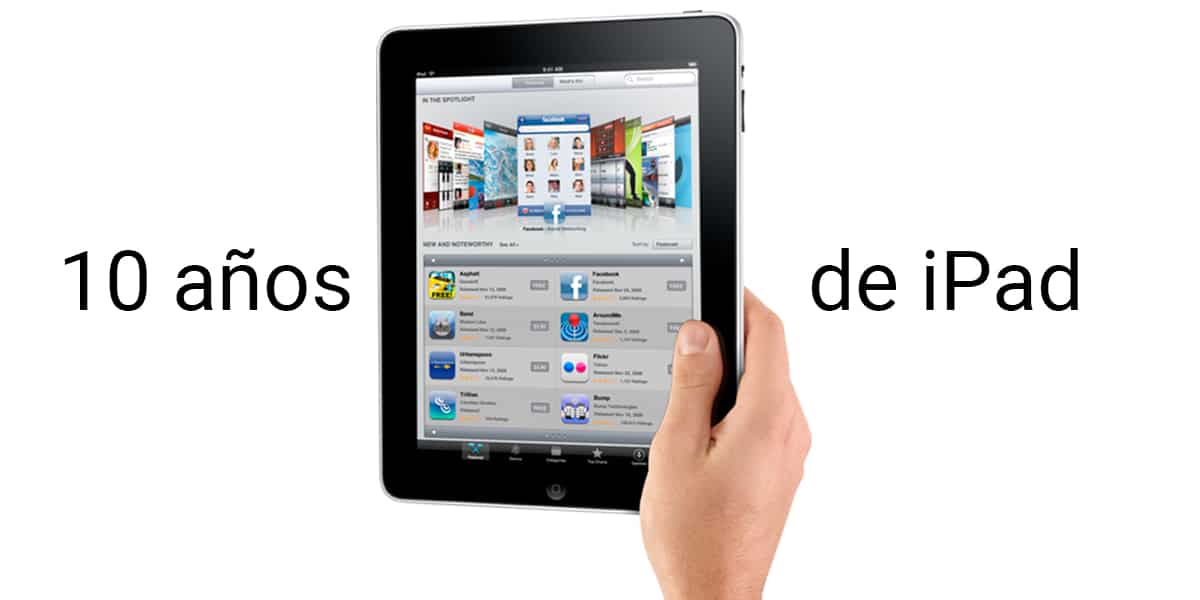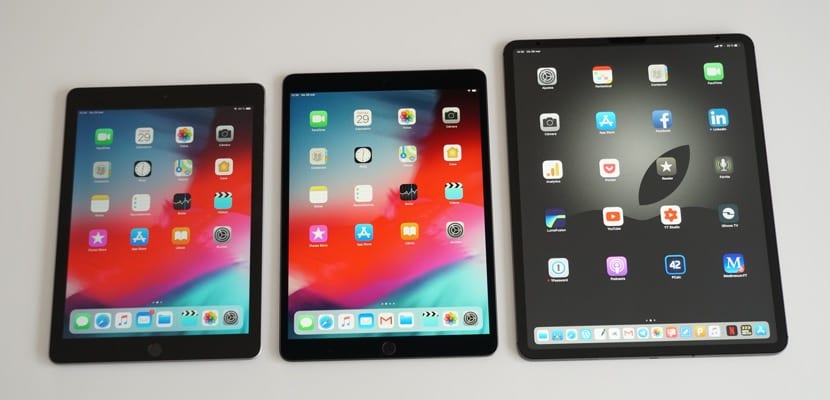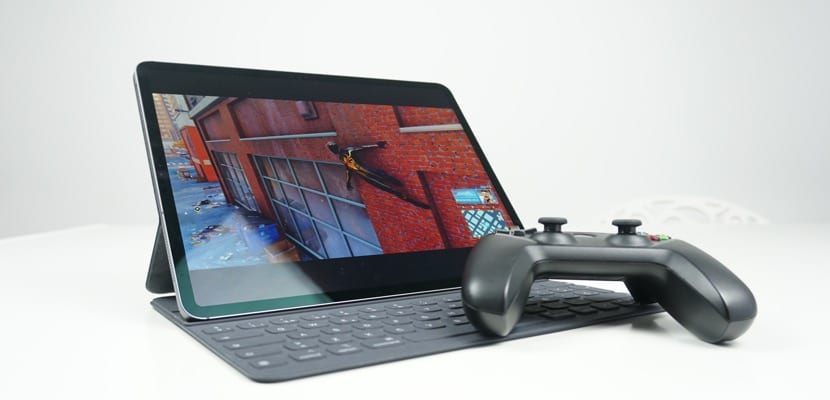
Remember when the iPhone was a ridiculously small product? It was 3,5 inches of pure fantasy but insufficient for many things, reading the newspaper on it was an almost impossible task. However, Steve Jobs decided to open our mouths with a 9,7-inch iPhone in which to consume a lot of multimedia content in the most comfortable way. On January 27, 2010, the iPad was released, the most popular and sold tablet on the market, what has changed in all this time? Let's take a brief look at the history of this popular product.
Actually the iPad was before the iPhone
The war at this time was actually between Apple and Microsoft, and far from what both companies have now become, at that time they were more focused on meeting the needs of a specific audience: The office worker. It all came about because Steve Jobs learned that Microsoft was planning to create an electronic tablet that would use a pencil (stylus), something that good old Steve hated with all his soul (if he saw the Apple Pencil ...).
I want you to make a tablet, and it cannot have a pointer or keyboard.
A real challenge for the engineers of a company that was not what it is then, however in just seven months they had a prototype that not only had a screen "Multi-touch" (the first on the market) but the user could scroll through the content with his finger and even interact with it through gestures. However, during that time Steve Jobs had another target to hate more than stylus, mobile phones.
We all walked around complaining about how much we hated our phones. They were too complicated. They had applications whose operation no one could find out, including the address book.
From there the rest is history, Apple simply turned what it already had for the iPad into a more compact size, the engineering team went to work miniaturizing the product, and tailored user needs at the application level to create the iPhone.
The trajectory of a round product
The iPad quickly became a best seller, especially for the price, from about € 400 for the entry version (although it is higher than the current version), yes, it had many shortcomings such as the lack of a camera and a weight well above the current one, between 680 grams and 730 grams depending on the version chosen.

Since then we have seen all these versions in their standard range, the 9,7-inch, which has now been replaced by a 10,2-inch model, which is apparently going to be the standard from now on. As we have said, we do not mention here the iPad Mini range that has had several versions, nor the current Pro range, which we will talk about later.
- Original iPad - 2010
- iPad 2 - 2011
- New iPad - 2012
- iPad 4 - 2012
- iPad Air - 2013
- iPad Air 2 - 2014
- iPad (2017)
- iPad (2018)
- iPad Air - 2019
- iPad 10,2 ″ - 2019
IPad lights and shadows
As in any ten-year trajectory we are going to find lights and shadows, in this case we are going to start with the range iPad Mini, a range that despite being launched with much hype in 2012, the fact of having "only" 7,9 inches when phones has been growing infallibly made it a relatively niche product. However, currently Apple has an Apple Mini in the catalog from € 449 about which there is little talk for obvious reasons. However, the star hit is found in the New iPad, a product that was on the market for half a year. The third generation iPad was released on March 19, 2012, they decided to include a 2048 × 1536 pixel Retina display with an un-upgraded RAM and a processor that suffered horrors. It also did not have a Lightning connector and the complaints were constant about its performance, all this caused that seven months later Apple launched the fourth generation iPad, solving all these errors that the Cupertino company never admitted, but with the withdrawal of the New iPad was enough to read between the lines.

The iPad Air 2, however, was the iPad's first show of power, With Touch ID, NFC, the Apple A8K processor and 2GB of RAM, a hardware-level effort that kept it at the top of performance for many years, it actually continues to perform today with spectacular results. A product that has aged great despite its almost six years of life, and all this without significantly increasing the price, in fact it was one of the cheapest. Since then Apple has followed this maxim of making the iPad its most adjusted product in value for money, for shows the iPad (2017) and the new iPad 10,2 ″.
The iPad Pro, destined to kill the PC
Apple has been trying for years to convince us that the iPad, more specifically the iPad Pro, is going to kill the traditional laptop, and the reality is that they are giving compelling reasons for it. The iPad Pro arrived in September 2015 with a lot of power, almost a 13 ″ screen and a stylus (the one hated by Steve Jobs) like never before seen in the technology market. However, iOS's barriers to creativity and its single Lightning connection were still too significant a stumbling block for shoppers.

In 2019 everything took an unexpected turn, Apple released iPadOS, an operating system of its own that has little to envy macOS and Windows 10, whose limits are yet to be known. To top it off, the new iPad Pro design released in late 2018 featured an extremely versatile USB-C port, that taking advantage of the possibilities of iPadOS make the iPad Pro a real beast. This is how the iPad was born by chance, ended up giving up its prominence to the iPhone and is ending up killing the market for laptops. It has been around for ten years, but what for me is one of Apple's best products, it still has a lot to do for us.